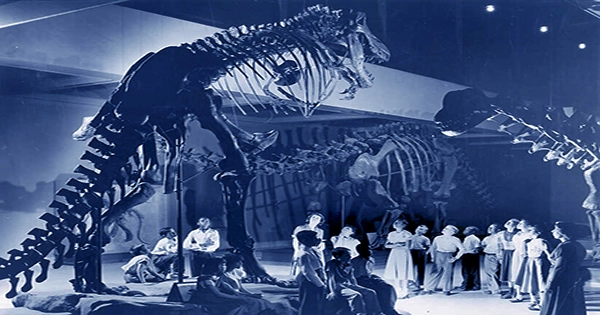Vandals with sledgehammers smashed bones and models meant for display in New York’s first dinosaur museum before it was even finished in 1871.
Contemporary news reports blamed corrupt politician William “Boss” Tweed, but researchers have now revealed that the true culprit was likely Henry Hilton, who was apparently obsessed with white paint and had “a remarkable ability to destroy everything he touched,” according to researchers who revisited the events.
Hilton was the vice president and treasurer of Central Park, where the Paleozoic Museum was to be built to educate and entertain visitors. Researchers wrote in a study published May 10 in the journal Proceedings of the Geologists’ Association(opens in new tab) that he favored a competing project to develop the American Museum of Natural History, which may have partly motivated the destruction of artifacts intended for the Paleozoic Museum.
“Something didn’t seem right reading these reports,” said co-author Vicky Coules(opens in new tab), a researcher in the Department of History of Art at the University of Bristol in England, in a statement(opens in new tab). “So we went back to the original sources and found out that it wasn’t Tweed.”

Central Park’s commissioners were inspired by a show in England called the Crystal Palace Dinosaurs and recruited the assistance of its creator, a natural history artist named Benjamin Waterhouse Hawkins. Hawkins came to the United States in 1868 and began collecting dinosaurs and other prehistoric fossils, which he kept in a workshop near the park.
Hawkins invented the “hidden” metal armature that is still used today to keep skeletons in a natural attitude and created full-size mounts of the dinosaurs Hadrosaurus foulkii and Laelaps aequilunguis. According to the study, drawings from Hawkins’ studio show that he preserved skeletons of modern flightless birds, which he used as analogs for bipedal dinosaurs.
However, at the height of his power in 1870, Tweed replaced the Central Park commissioners with his own team and unexpectedly scrapped plans for the Paleozoic Museum, sacking Hawkins. Two months later, a band of construction workers committed the most heinous act of vandalism in the history of dinosaur research and museum development by trashing Hawkins’ studio and destroying all the artifacts they could uncover.
“Previous accounts of the incident had always reported that this was done under the personal instructions of ‘Boss’ Tweed himself, for various motives ranging from raging that the display would be blasphemous, to vengeance for a perceived criticism of him in a New York Times report of the project’s cancellation,” said co-author Mike Benton, a professor of vertebrate paleontology at the University of Bristol in England, in a statement.
However, when the researchers examined records related to the incident, the evidence did not add up. Coules believes Tweed would have had greater fish to fry at the time of the crime. “Tweed was fighting for his political life, already accused of corruption and financial wrongdoing, so why was he so involved in a museum project?” The timing of the vandalism operation also did not coincide with the negative New York Times piece.
A thorough examination of the historical materials indicated that Tweed nominated Hilton as treasurer of Central Park and entrusted him with founding the American Museum of Natural History.
According to the report, Hilton indicated his intention to close Hawkins’ workshop in a meeting of the Central Park board that Tweed was not present. While it is still plausible that Tweed was behind the scenes, the researchers found no evidence to imply that he was.
Hilton was also known for making questionable decisions, according to the experts. “Hilton exhibited an eccentric and destructive approach to cultural artifacts, as well as a remarkable ability to destroy everything he touched,” the authors stated. He insisted on painting white a statue of Eve at the Fountain in Central Park and a whale skeleton presented to the museum, for example. Both had been ruined and could not be repaired. According to the complaint, Hilton then scammed a widow out of her inheritance, squandered his riches, and wrecked other people’s businesses and livelihoods as he proceeded through life.
Hawkins was never compensated for his dismissal, but pinpointing the likely culprit gives new light on the strange case of the dinosaurs in Central Park. “This may appear to be a local act of thuggery, but correcting the record is hugely important in our understanding of paleontology’s history,” Benton said.
















